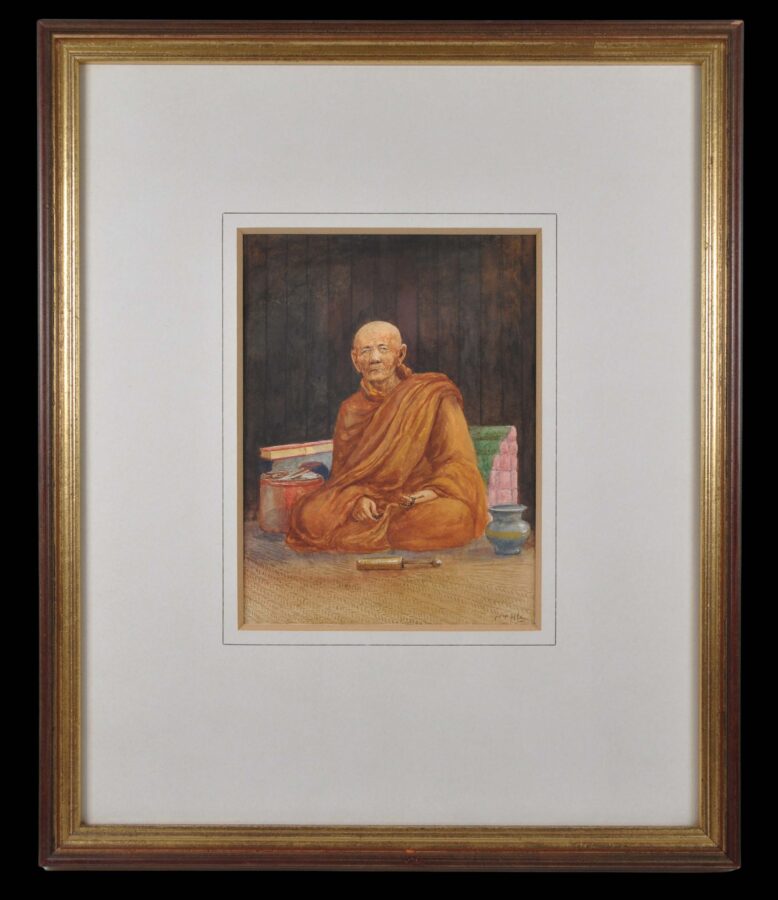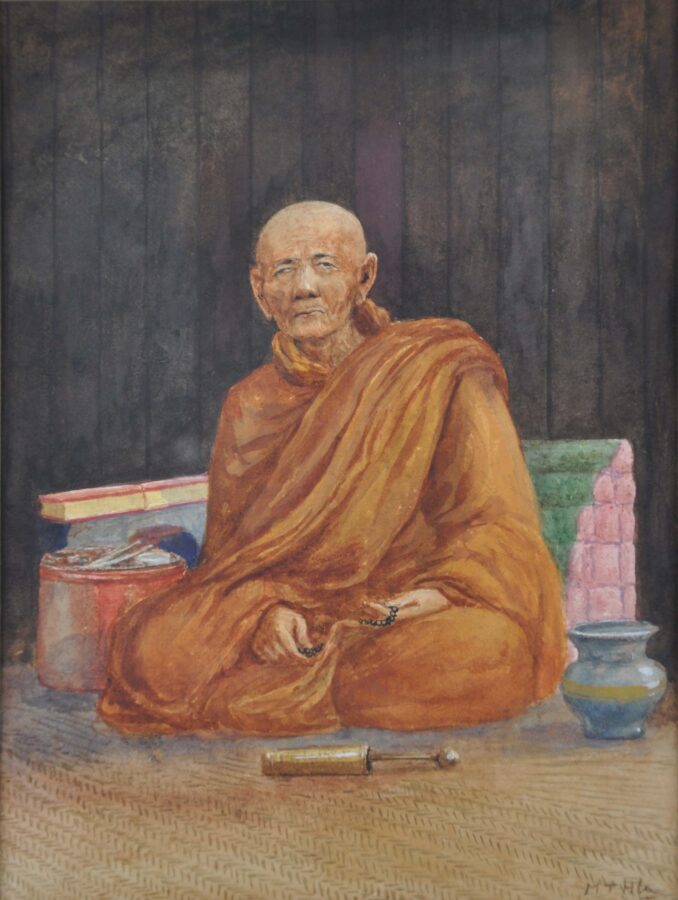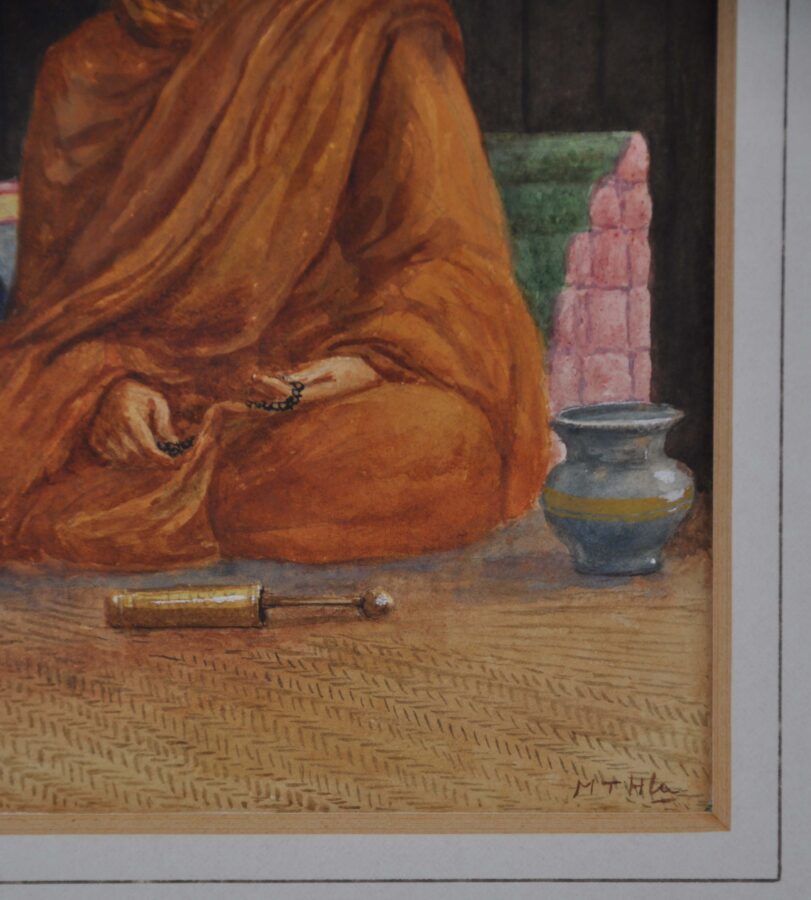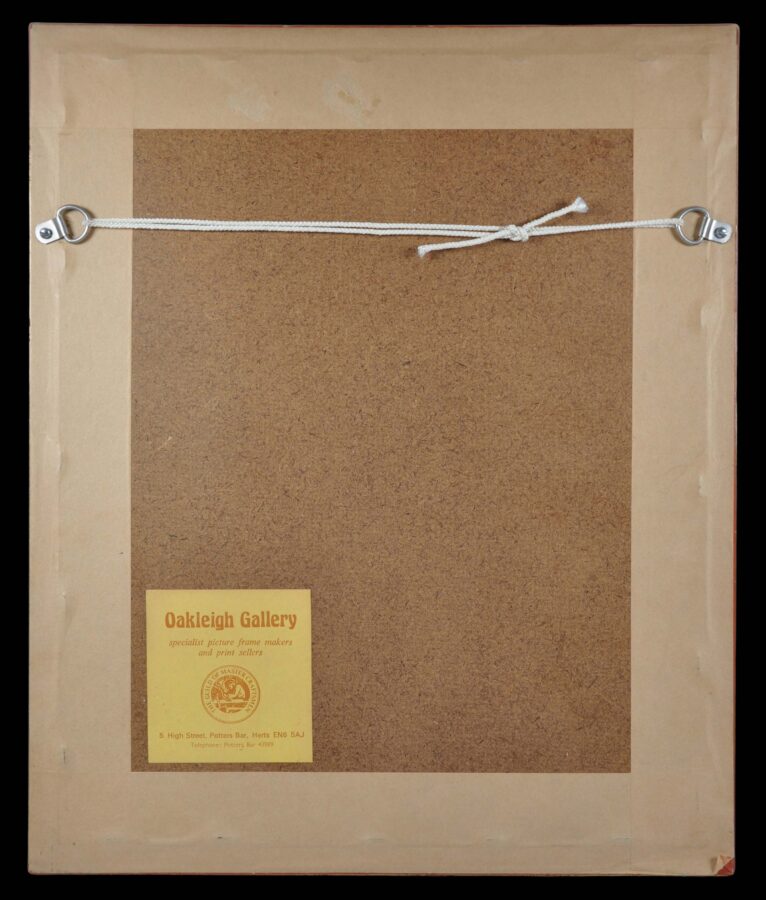Enquiry about object: 9409
Burmese Watercolour by Maung Tun (M.T.) Hla
Burma (Myanmar) undated, but circa 1920
dimensions of visible painting: 14 and 18.6cm, dimensions of frame: 33.5 and 40.5cm
Provenance
private collection; UK art market
This finely executed watercolour by the early 20th century Burmese artist Maung Tun (M.T.) Hla (1874-1946), shows an elderly Buddhist monk seated on a woven rattan mat. There are some well-observed and interesting details – before the monk is a brass tube with a protruding rod. This is a betel crusher used by those who no longer have many or any of their own teeth and so cannot easily chew. They are still addicted to betel, which is a mild social drug that was chewed, but in order to take betel, they would need to first mash it up in one of these devices. On the monk’s right (our left) is a betel set – all the other accoutrements used to hold the various elements of the betel quid, in a cylindrical lacquer box. And on the monk’s left, is a spittoon, in which the spent betel quid would be spat. The monk leans against a padded bolster of pyramidal form and also on his right, above the betel set, is a palm leaf manuscript, there to emphasise the monk’s learning and devotion to scripture.
The painting is typical of M.T. Hla’s work, with its superb composition and technical skill which is most apparent in the subtle rendering of the clouds and the reflections in the water.
The work is signed ‘M.T. Hla’ in the bottom right corner.
Along with Ba Ohn, U M.T. Hla (U is the Burmese approximation for Mr) is the earliest pioneer of Western-style painting in Burma. Both received personal instruction in Western painting techniques. M.T. Hla also received traditional instruction and undertook traditional painting decoration for the banners and other decorations associated with Burmese Buddhist celebrations and ceremonies.
Ranard (2009, p. 57) comments in respect of M.T. Hla, that ‘more than two dozen of his paintings have surfaced, most of them watercolour…’ It is likely that most of the artist’s works were acquired by colonial administrators and their families and brought back to England and Scotland in the early twentieth century. It would appear that very few of the artist’s works have survived in Asia. Several paintings by M.T. Hla are found in the collection of the National Museum, Myanmar, however.
Ranard observes that twelve of the artist’s paintings survive in the collection of Denison University (Ohio). (Ranard reproduces five M.T. Hla paintings in his book.)
M.T. Hla is historically important in the development of modern Burmese painting. His work represents a break with traditional styles of painting and heralds the evolution of a vibrant and dynamic painting scene in Burma which lasts to this day.
The example here has a later frame.
References
Khin Muang Nuynt et al, Myanmar Painting: From Worship to Self-Imaging, EvoHeritage, 2006.
Ranard, A., Burmese Painting: A Linear and Lateral History, Silkworm Books, 2009.





